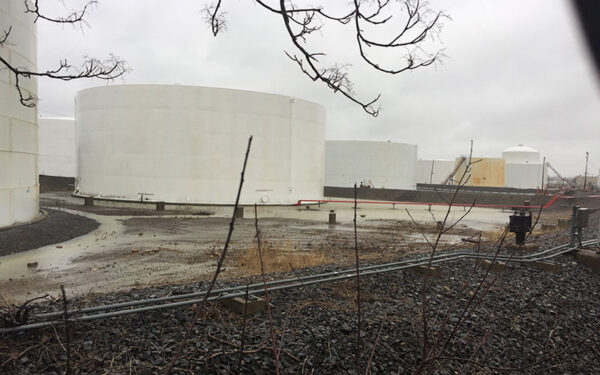
Renewable Energy Certificates help states track progress towards their clean energy goals. Photo: Shutterstock
Renewable Energy Certificate Basics
- Renewable Energy Certificates (RECs) are an accounting system used by utilities and states to track clean energy. Every megawatt hour generated by a clean energy source (such as a wind turbine) creates one Renewable Energy Certificate.
- RECs let us measure our progress on clean energy by giving utilities a way to buy and sell renewable power.
- They also ensure that states can track Renewable Portfolio Standard targets, which are an important tool for combatting the worst effects of climate change and bringing new clean energy jobs to New England.
What Is a Renewable Energy Certificate?
A Renewable Energy Certificate is a way to measure and track the production of clean energy. It’s how states and utilities track how much clean energy is being produced by renewable energy sources such as wind, solar, and geothermal, and which electrical utilities are buying that power.
How Does It Work?
Every clean energy development, like a wind or solar farm, is issued a number of RECs equal to the number of megawatt hours of electricity it produces and delivers to the power grid. Each REC represents one megawatt hour of clean electricity. (For context, an average American home uses about 7 megawatts of electricity each year.)
RECs are sold on the open market, which serves two purposes. First, they are bought by utilities to track how much renewable energy they are supplying to their customers (you and me). Since utilities are required by state law to get a minimum amount of their energy from clean sources, RECs essentially serve as the accounting system that utilities and states use to monitor how much renewable energy is actually being used – and how well they are meeting the state’s renewable energy goals. Utilities can also make an Alternative Compliance Payment instead of buying a REC. (For instance, if there are no RECs available to purchase.) This means they’re essentially paying a fee, that often goes into a state’s renewable energy fund, in lieu of purchasing a certificate.
Second, they provide a secondary source of income to clean energy developers. A wind or solar farm not only generates income from the electricity it produces to power our homes and businesses; it also makes money from selling RECs. This secondary income helps to offset the upfront costs of developing renewable energy projects, making new projects more feasible and helping to ensure that we are steadily growing the number of clean energy projects.
Why Do We Need Renewable Energy Credits?
Every state in New England either has a Renewable Portfolio Standard or a renewable energy goal. These are state policies that require utilities to get a certain amount of their energy from clean resources like solar and wind each year. These policies can, when done well, help us move away from polluting fossil fuels and promote the growth of a clean energy economy.
For states to meet their Renewable Portfolio Standards, New England needs to purchase more RECs every year. That means investing in renewable energy projects to generate these RECs, and tracking who is producing and who is buying how much energy.
Essentially, Renewable Energy Certificates ensure that we can measure our clean energy progress by giving utilities and energy producers a way to buy and sell it. (There’s even more to this accounting mechanism.)
How It All Ties Together
Renewable Portfolio Standards help push us towards our ultimate goals: moving away from harmful fossil fuels, promoting the growth of a new energy economy, and protecting New England for generations to come. Renewable Energy Certificates help us track our progress toward achieving those goals.
As a New England resident, you can help us reach our energy goals by supporting Renewable Energy Standards. Attend hearings, write comments to or call your legislators, and sign up for our email action alerts so you’ll know when you can make your voice heard.



